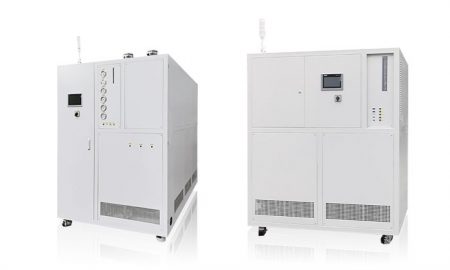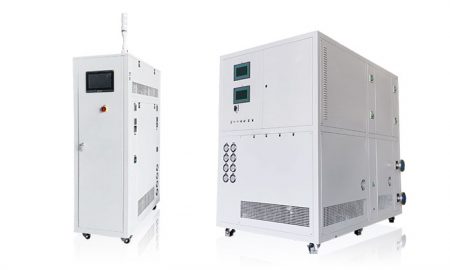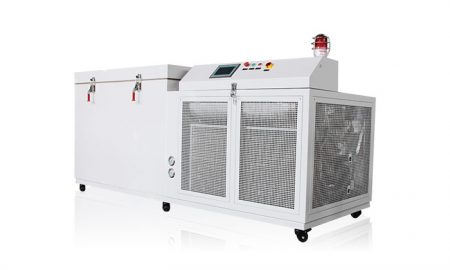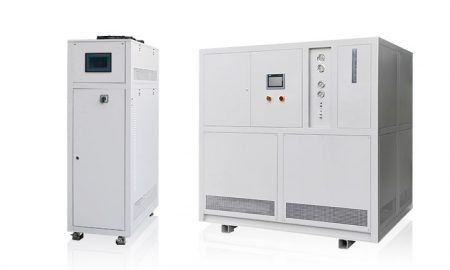IC Chip Temperature Shock Tester
In each link of production and manufacturing, it is necessary to ensure that each link must be cleaned. When the impurities in the pipes of the refrigeration system accumulate to a certain extent, the filter will be blocked, which will affect the circulation of refrigerant in the system, and in severe cases, low-pressure failure will occur. So, how to determine the evaporation temperature and condensation temperature of the IC chip temperature shock tester?
1. The condensation temperature of the compressor system refers to the temperature at which the refrigerant condenses in the condenser, and the refrigerant vapor pressure corresponding to this temperature is the condensation pressure. For water-cooled condensers, the condensing temperature is generally higher than the cooling water temperature.
2. The condensation temperature is one of the main operating parameters of the IC chip temperature shock tester. For the actual refrigeration device, due to the small variation range of other design parameters, it is directly related to the cooling effect, reliability and performance of the IC chip temperature shock tester. consumption level.
3. Evaporation temperature refers to the temperature at which the refrigerant evaporates and boils in the evaporator. It corresponds to the corresponding evaporation pressure. The evaporation temperature is also an important parameter in the refrigeration system. In the ideal state, it is the cooling temperature, but in actual operation, the evaporating temperature of the refrigerant is slightly lower than the cooling temperature by 3 to 5 degrees.
4. The evaporating temperature and condensing temperature are based on the needs, such as air-cooled chillers, the condensing temperature mainly depends on the ambient temperature, and the evaporating temperature depends on what you are using. The evaporating temperature of the air conditioner is higher, the refrigeration temperature is lower, and the freezing temperature Lower, even in some low temperature areas, the required evaporation temperature is lower. These parameters are not unified, mainly depends on the actual application.
5. The evaporation temperature is equal to the actual outside temperature minus the heat transfer temperature difference. The evaporation temperature is too high, the temperature of the cold air from the evaporator is high, the cooling is slow, and even the expected temperature is not reached at all. Influence on refrigeration cycle: high superheat degree, low return air pressure, exhaust pressure also decreases, pressure of liquid supply pipeline decreases, and unit flow decreases. This cycle makes the warehouse cool down slowly, the machine keeps working, the wear is large, and the efficiency is low.
6. The lower the evaporation pressure, the lower the evaporation temperature. Evaporation temperature adjustment, in actual operation, is to control the evaporation pressure, that is, to adjust the pressure value of the low pressure pressure gauge. In operation, the low pressure pressure is adjusted by adjusting the opening of the thermal expansion valve (or throttle valve). If the opening degree of the expansion valve is large, the evaporating temperature will increase, the low pressure pressure will also increase, and the cooling capacity will be large; if the opening degree of the expansion valve is small, the evaporating temperature will decrease, the low pressure pressure will also decrease, and the refrigerating capacity will decrease.
It is common for failures to occur during operation, and the solutions to different failure situations are different, so users should master a variety of different failure solutions.
We are a professional manufacturer of temperature control equipment, supporting customized services, please consult us for details!
Temperature Control Range: -150°C to +50°C

Dynamic Temperature Control Systems
Temperature Control Range: -120°C to +350°C

Temperature Control Range: -40°C to +100°C

Temperature Control Range: -85°C to +250°C

Temperature Control Range: -150°C to -10°C
 LNEYA
LNEYA
 简体中文
简体中文


















































































